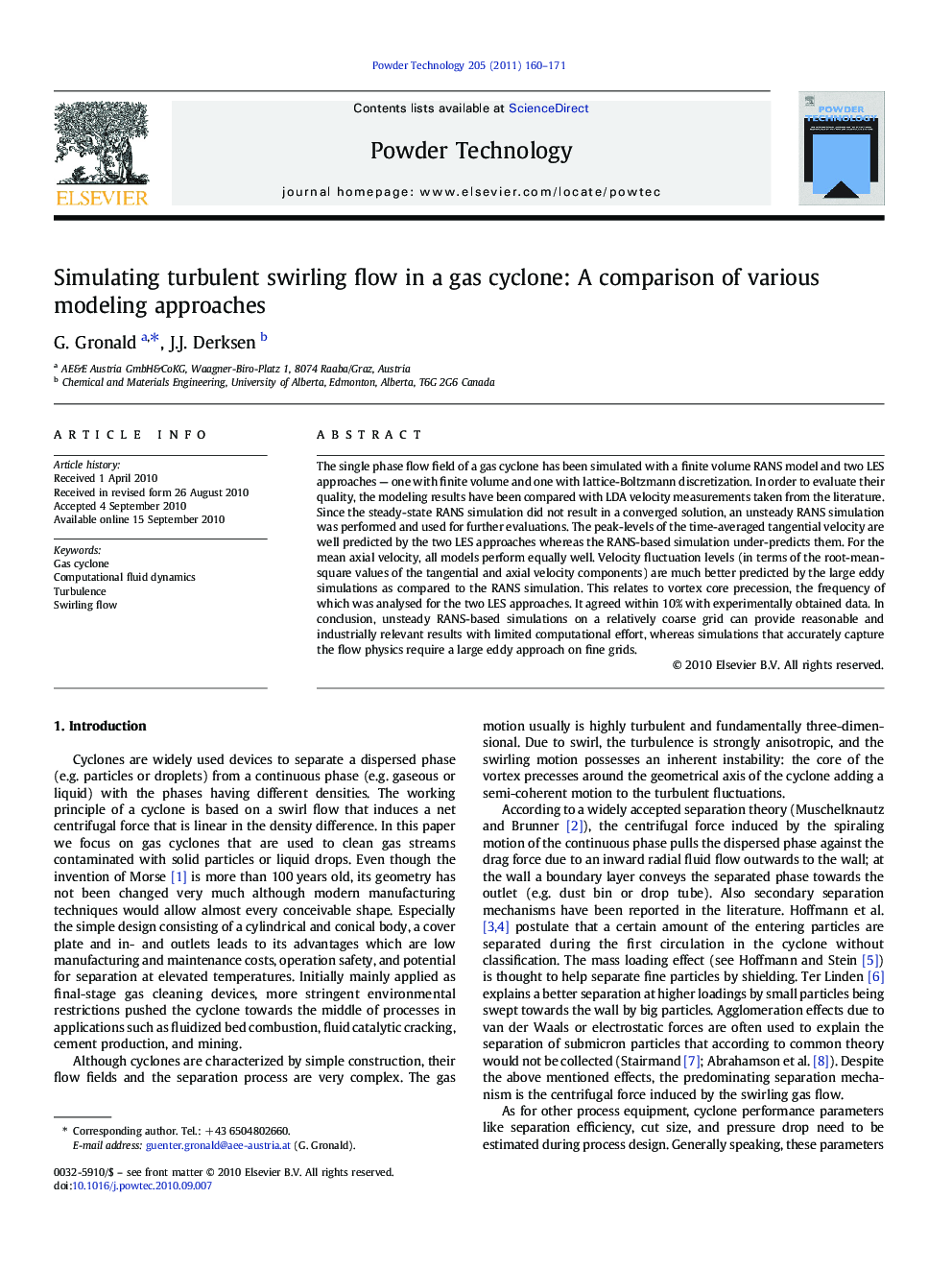| کد مقاله | کد نشریه | سال انتشار | مقاله انگلیسی | نسخه تمام متن |
|---|---|---|---|---|
| 238181 | 465745 | 2011 | 12 صفحه PDF | دانلود رایگان |

The single phase flow field of a gas cyclone has been simulated with a finite volume RANS model and two LES approaches — one with finite volume and one with lattice-Boltzmann discretization. In order to evaluate their quality, the modeling results have been compared with LDA velocity measurements taken from the literature. Since the steady-state RANS simulation did not result in a converged solution, an unsteady RANS simulation was performed and used for further evaluations. The peak-levels of the time-averaged tangential velocity are well predicted by the two LES approaches whereas the RANS-based simulation under-predicts them. For the mean axial velocity, all models perform equally well. Velocity fluctuation levels (in terms of the root-mean-square values of the tangential and axial velocity components) are much better predicted by the large eddy simulations as compared to the RANS simulation. This relates to vortex core precession, the frequency of which was analysed for the two LES approaches. It agreed within 10% with experimentally obtained data. In conclusion, unsteady RANS-based simulations on a relatively coarse grid can provide reasonable and industrially relevant results with limited computational effort, whereas simulations that accurately capture the flow physics require a large eddy approach on fine grids.
Graphical AbstractThree different numerical approaches have been used to simulate the single phase flow field in a gas cyclone: two large eddy models and a RANS model. The components of the velocity vector (axial, radial and tangential) are compared with high-quality laser Doppler anemometry (LDA) data in various sections. The large eddy models agree with the measurements better than the RANS model.Figure optionsDownload as PowerPoint slide
Journal: Powder Technology - Volume 205, Issues 1–3, 10 January 2011, Pages 160–171